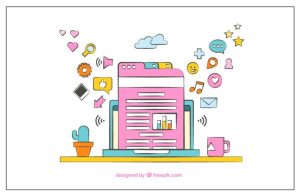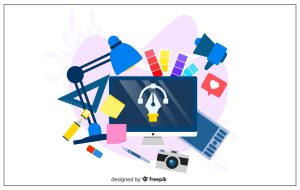IoT For Dummies ~ What Is ‘The Internet of Things’ For Dummies

What is the IoT?
The Internet of Things (IoT), which will connect connected devices and improve business and society, will be a global network of intelligent devices. To create a secure and complete IoT solution, there are many design challenges that must be faced. I won’t get too technical. The underlying technology is the wireless radios used to allow the devices to connect to the Internet. There are more well-known standards, such as Wi-Fi and low-energy Bluetooth. NFC and RFID are also available. These are the most popular. There are also the items themselves, such as motion sensors, door locks, or light bulbs. In some cases, a central hub may be used to allow different devices to connect.
Cloud services allow for the collection and analysis of data. People can then see what’s happening and take action via their mobile apps. The Internet of Things (IoT) is a concept that aims at establishing and inter-networking of all inanimate objects so as to allow them to communicate with each other without any human intervention. To put it simply, the internet of things is basically the internet for things, where things refer to any and all electronic devices that humans use. On the basic level, IoT points to the connection of everyday things to each other and to the internet. That makes it pretty much the internet of everything. Now you may ask, what is its goal? The answer is – A smoother, more convenient experience for the user. For more see below the guide of IoT For Dummies.
The Internet of Things – IoT History
- 1970- The actual idea of connected devices was proposed
- 1990- John Romkey created a toaster that could be turned on/off over the Internet
- 1995- Siemens introduced the first cellular module built for M2M
- 1999- The term “Internet of Things” was used by Kevin Ashton during his work at P&G which became widely accepted
- 2004 – The term was mentioned in famous publications like the Guardian, Boston Globe, and Scientific American
- 2005-UN’s International Telecommunications Union (ITU) published its first report on this topic.
- 2008- The Internet of Things was born
- 2011- Gartner, the market research company, include “The Internet of Things” technology in their research
Which Companies Are Involved In IoT?
The easier question is: Who isn’t working to create an IoT product? Many smaller companies and startups are also working on connected devices. According to Gartner, will see 4.9 billion connected devices this year and 25 billion by 2020 according to the research group.
How Does The Internet Of Things Work?
The simplest answer would be: on technology. Ever since the introduction of the internet and Wi-Fi, the population has witnessed that more and more devices with built-in Wi-Fi connectivity were being manufactured. The IoT also works on similar principles. There is underlying technology such as Wi-Fi, Bluetooth (usually low-energy Bluetooth, RFID, and NFC), and wireless radios that permit the devices to connect to the internet and then to each other. In addition to these familiar technologies, there are also the likes of Z-Wave, 6LoWPAN, and ZigBee that are at work. Also in the picture are cloud services.
Guide to Understanding the IoT Internet of Things
What is The Internet of Everything?
The Internet of things refers to the devices like sensors and actuators, but the term The Internet of Everything used by Cisco is broader and encompasses the devices, data, people, and processes.
The devices e.g sensors will send data. This data will then be processed and used by people or by machines to control the devices or other devices.
IOT Development Phases
The growth of the IoT is expected to go through several stages of development.
- Passive – RFID sensors etc –
- Active- Responds to sensor data
- Aware- can make choices based on data.
- Autonomous -e.g. self-driving cars
We are currently in the early stages of development (The passive phase) where we are receiving data from objects and manually taking action.
IOT Components
An IOT system comprises three basic components.
- The Things -sensors actuators, etc
- The Network and protocols
- The Platforms, Apps, and services
Common IOT Terms
- M2M – Machine to machine
- P2P – Person to Person
- P2M – Person to Machine
- IIOT– Industrial Internet of Things
- HIOT– Home Internet of Things
- CIOT– Consumer Internet of Things
- Big Data – Very large data sets that can be analyzed to reveal insights and trends
- RFID– Radio Frequency Identification
- NFC– Near field communication
Advantages of IoT
Technical Optimization: IoT technology is a great tool for improving and optimizing technologies. IoT allows a manufacturer to gather data from different car sensors. They are used to optimize the design of the product and increase its efficiency.
Improved Data Collection IoT allows for immediate data access.
IoT reduces waste: IoT provides real-time data that allows for effective decision-making and management of resources. If a manufacturer discovers an issue in multiple car engines, he can track their manufacturing plans and fix it with the manufacturing belt.
IoT can improve customer engagement by improving customer experience through the detection of problems and improvement of processes
By knowing your usage patterns, you can save money on heating bills.
IoT allows automobile companies to manage billing, parking, and insurance automatically.
This app allows you to track your heart rate, calories expended, activity levels, and skin temperature.
Remotely turn on and off any device. You can also track the device’s energy levels and receive custom notifications directly to your smartphone.
IoT technology allows users to see the availability of parking spaces in real-time on their smartphones.
A connected health system allows for real-time monitoring of patient health and care. It improves medical decision-making by utilizing patient data.
A smart city can be used for all kinds of purposes, including traffic management, water distribution, and waste management.
The smart home is a way to integrate connectivity into your homes. This includes smoke detectors and home appliances, light bulbs and windows, as well as door locks and door locks.
This software allows you to track goods on the road and get information from suppliers.



